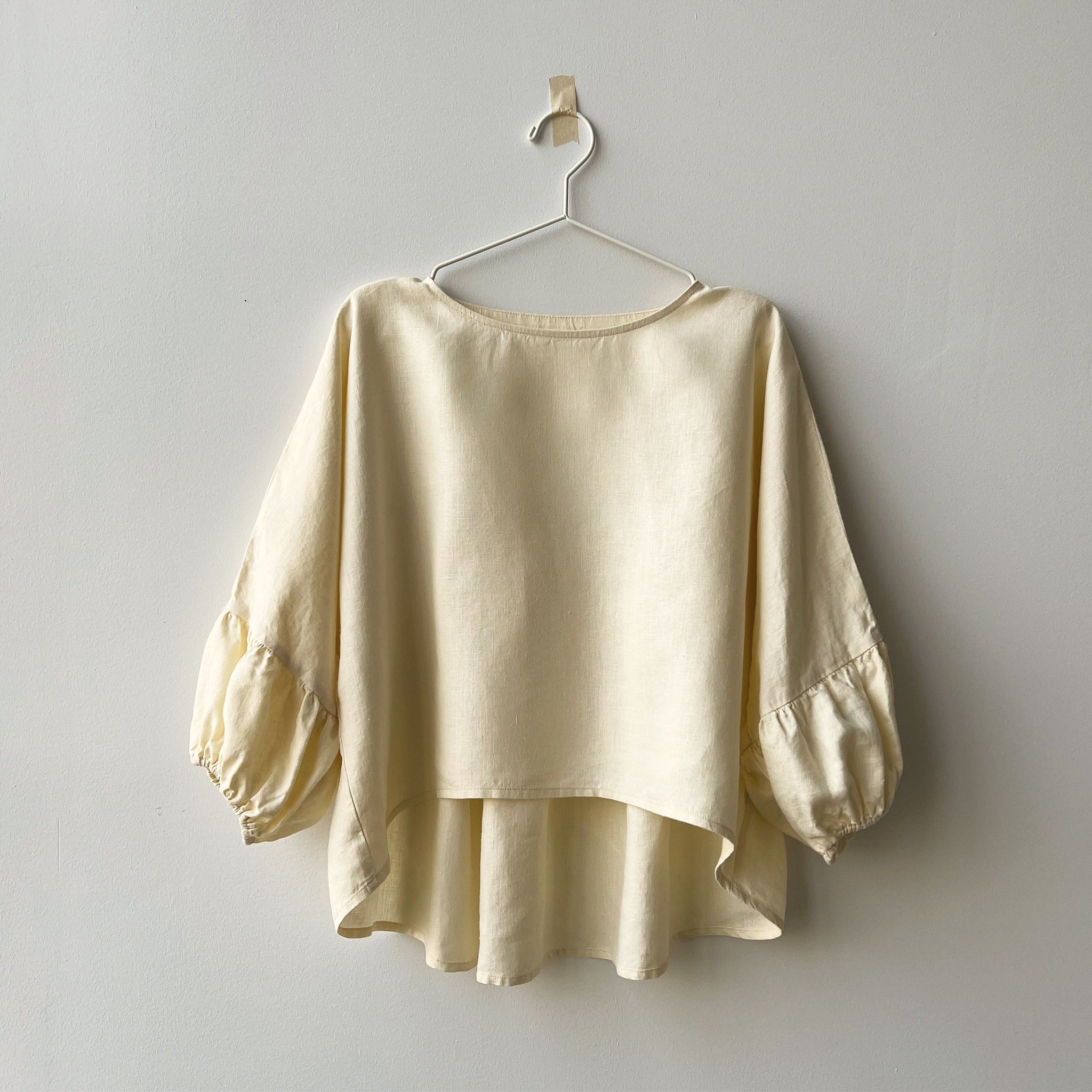I wasn't drawn to hemp for any activism or political reason, really. I just happened to come across a beautiful piece of fabric.
Two yards, purchased out of curiosity. The fabric was heavier weight than I was used to with linen. It had an appealing softness and a buttery color — more soothing than white, not as drab as typical beige linen. I started dreaming up plans for it. It reminded me of one of my favorite dresses and yet another that I regretted not buying.
So strong were my visions for this fabric that it remained in my stash for a couple of years, untouched because of my fear of ruining it. I was afraid of using it hastily and then not being able to find it again.
When I decided to work on the Muse Top, I immediately thought of the hemp. It had the weight and drape I wanted, kept its shape better than linen and took color beautifully. But, of course, I needed more and couldn't find it. Not anywhere. I miraculously found its SKU number that I’d scribbled on an index card, but the fabric was sold out at my usual source. This was the height of the pandemic and fabrics that normally would be in stock were hard to find. I didn't know the importer, much less the mill.
The search began. I scrolled through photo after blurry photo of fabrics, trying to see if the characteristics were the same, ordering samples, Googling "hemp fabric" and every related variation I could think of.
I tried talking myself into other fabrics — more samples, more pricing. But the more I looked for the hemp, the more I learned about it, and the more I loved it.
"Hemp doesn't wear out, it wears in."
— Summer Star Haeske, EnviroTextiles

WHAT IS HEMP?
Hemp is a variety of cannabis with only trace amounts of THC (below .3%), grown for fiber or seed. Hemp seed oil is an excellent fuel source. Hemp fiber can be used to make fabric, paper, rope, and even building materials. [1] [2]
HOW SUSTAINABLE IS HEMP?
I want to shout it from the rooftops: this fabric is incredible! We’ve already talked about why natural fibers are best for the environment, but even compared to cotton and linen, hemp pulls ahead.
- Growing hemp requires half the amount of water as cotton and each acre yields up to double that of cotton and 160% more than linen.
- Hemp can be grown without pesticides, herbicides, fertilizer, or crop rotation.
- Hemp fiber is stronger than cotton; instead of breaking down over its lifetime, it breaks in — beautifully.
- It is sweat-wicking and anti-odor, meaning, like a really authentic pair of jeans, it doesn’t require frequent washing.
- If not dyed with chemicals, hemp fabric is 100% backyard compostable. [3]
Ideal, right? So why aren’t we all wearing it, all the time?
THE IL-LEGALIZATION OF HEMP
Prior to 1937, we were! Fabric, rope, paper, and countless mainstream industrial products were made with hemp in the US. The Marijuana Tax Act of 1937 changed all that. Hemp was taxed practically into extinction. Many of its uses were soon replaced with plastic and nylon. By 1970, hemp was officially criminalized, swept up with drugs like heroin and LSD simply for being a cousin of THC-containing cannabis. [4]
Only recently has this begun to change. The 2018 Farm Bill finally removed hemp from the Controlled Substances Act and reassigned it as an agricultural product. [5] It isn’t legal to grow everywhere, but demand is picking up. Most producers in the US focus on a variety for CBD products. [6]
WHERE IS HEMP FABRIC MADE?
Most hemp fabric sold in the US is imported from China, the world leader in hemp fabric. To get grown- and made-in-USA hemp fabric, farming the hemp would only be the first step. The fiber would also have to be processed, then spun and milled here. There is only one (yes, one) company in the lower 48 that is able to process hemp for fiber. US textile mills are few and far between and because it's so different from cotton, are unequipped to work with hemp. [7] Domestic hemp fabric is still a dream, but one a lot of farmers and advocates are working towards. [8]

I did eventually find the fabric, imported from China, and that’s what became the Muse Top, as intended. In this search, though, I found more than fabric. What started as a beautiful little piece of material became an appreciation for a misunderstood plant and a renewed confidence that better alternatives are out there for fashion production.
— Anne-Marie
PS. The Muse Top is now available in the shop!
